The Illinois ACEs Response Collaborative (The Collaborative), a program of Health & Medicine Policy Research Group, released a brief today on recently published research relying on an existing youth survey to raise awareness about the connection between childhood experiences and health and well-being among Chicago Public Schools (CPS) high school students.
Childhood experiences, both positive and negative, have a profound impact on lifelong health and social outcomes. The new research summarized in “Childhood Experiences Influence Student Outcomes” assesses the prevalence of certain adverse and positive experiences among CPS high school students and their relationship to indicators of health and well-being. This work adds to a growing body of research indicating that while childhood adversity increases risk for health and social problems, positive relationships and experiences within schools and communities can prevent and mitigate the effects of adversity and support thriving for adolescents.
“We know that childhood adversity is common, and when insufficiently buffered, is detrimental to adolescent health and well-being,” noted Dr. Audrey Stillerman, a member of the research team and of the Collaborative’s Advisory Council. “This new research uses an existing, routinely-administered questionnaire to offer district level data about the influence of childhood experiences on CPS high school student outcomes. We hope this data will drive conversation AND action in CPS and across the city to advance both prevention and treatment of Adverse Childhood Experiences (ACEs) while enhancing positive experiences so students can flourish.”
Researchers with the Collaborative found that students reporting access to both a relationship with a trusted adult at school and participation in a team sport during the previous 12 months were significantly less likely to report mental health issues and may be less likely to report home insecurity, substance use, and physical health problems. The benefits of these two protective factors held true among students who also reported one or both of the two ACEs included in the study, 1) experiencing violence inflicted by an adult and 2) witnessing domestic violence.
Notably, having both protective factors in place while also experiencing one or both of the ACEs examined was associated with a 53% decrease in the likelihood of mental health problems, including suicidality, compared to students who reported having neither of the protective factors in place.
“We see this research as a call to action,” said Bridget Gavaghan, Director of the Collaborative. “Creating healthy relationships, experiences, and environments for young people within our schools and communities is our shared responsibility.”
About the Research
“Childhood Experiences Influence Student Outcomes” relies on an analysis of ACEs and protective factor data collected in the Youth Risk Behavioral Survey (YRBS) as administered to a random sample of CPS high school students in 2017. While the YRBS is the largest public health surveillance system in the United States, the core questionnaire does not include questions about childhood adversity. In 2017, the Collaborative successfully advocated for CPS to include two questions in the YRBS designed to serve as proxies for ACEs: 1) experiencing violence inflicted by an adult and 2) witnessing domestic violence.
Using these proxy questions and two existing protective factor questions already in YRBS, 1) having a trusted relationship with a teacher or adult at the school and 2) participating in a sports team in the last 12 months, researchers with the Collaborative assessed the prevalence of ACEs and protective factors among CPS high school students as well as their association with health-related behaviors, experiences, and conditions which contribute to the leading causes of death and disability among youth. Details from the research are available in the article, “Prevalence and Impact of Adverse Childhood Experiences on Chicago Public School Students in the Youth Risk Behavior Survey,” recently published by the Journal of School Health.[1]
